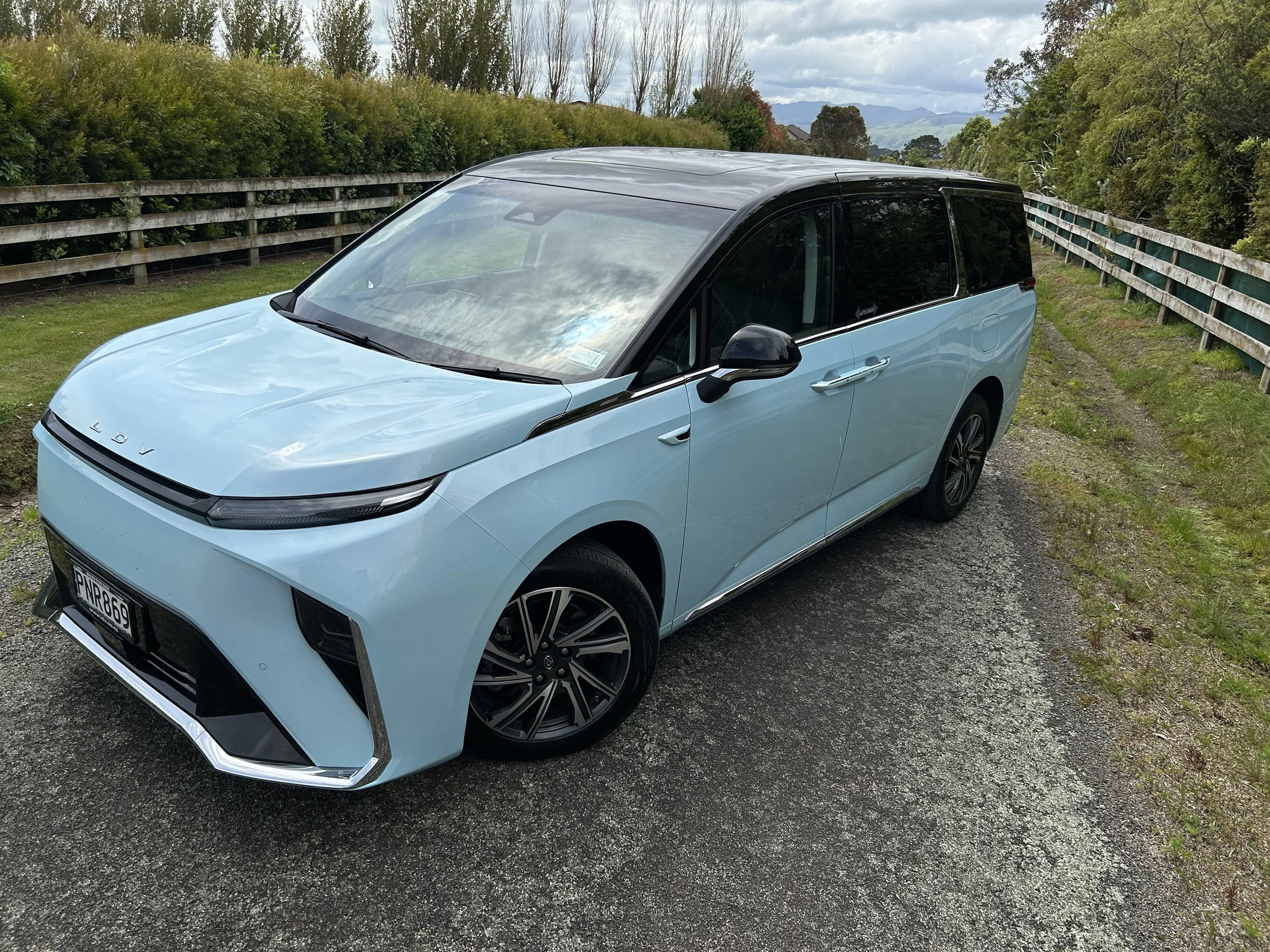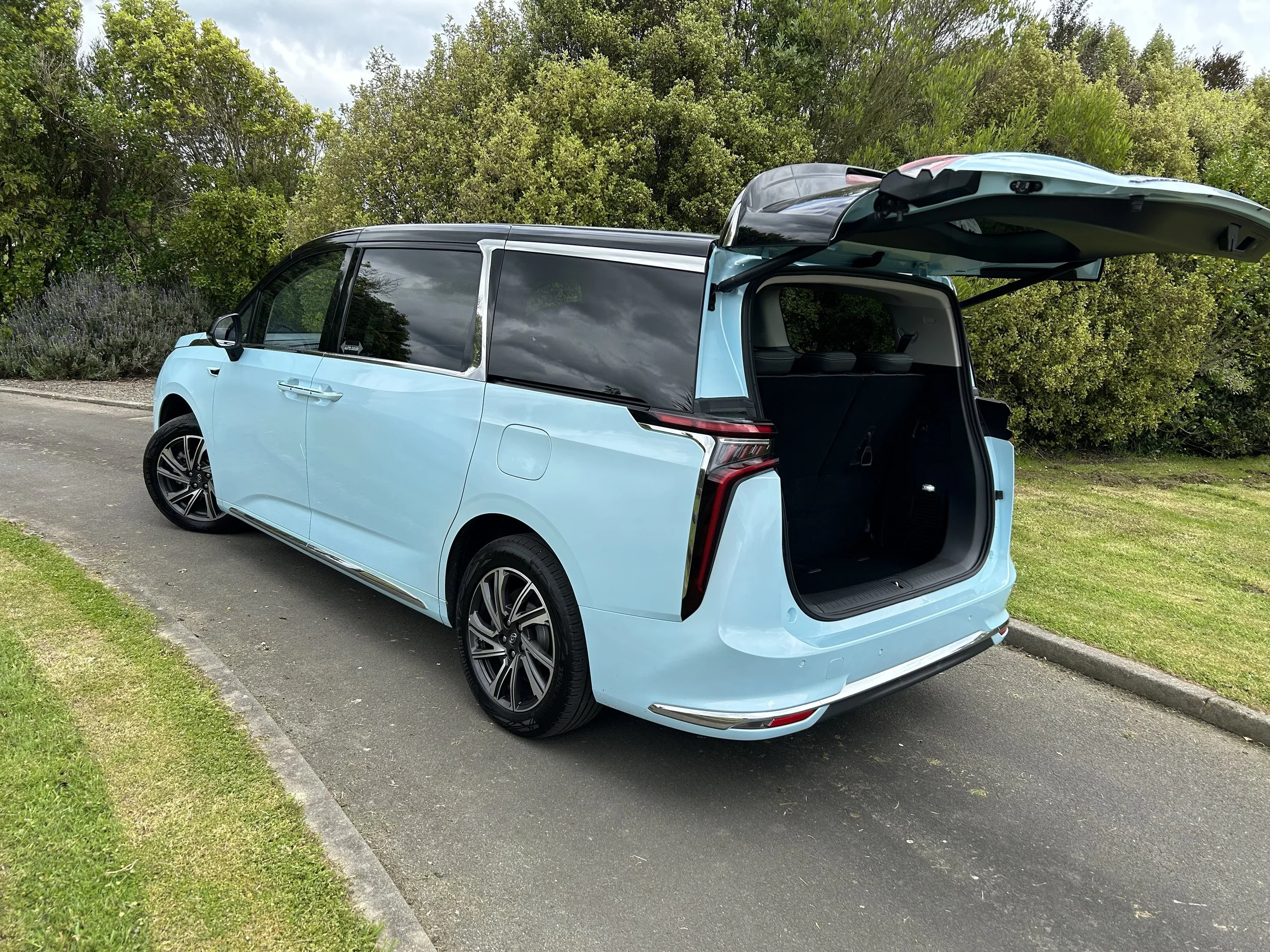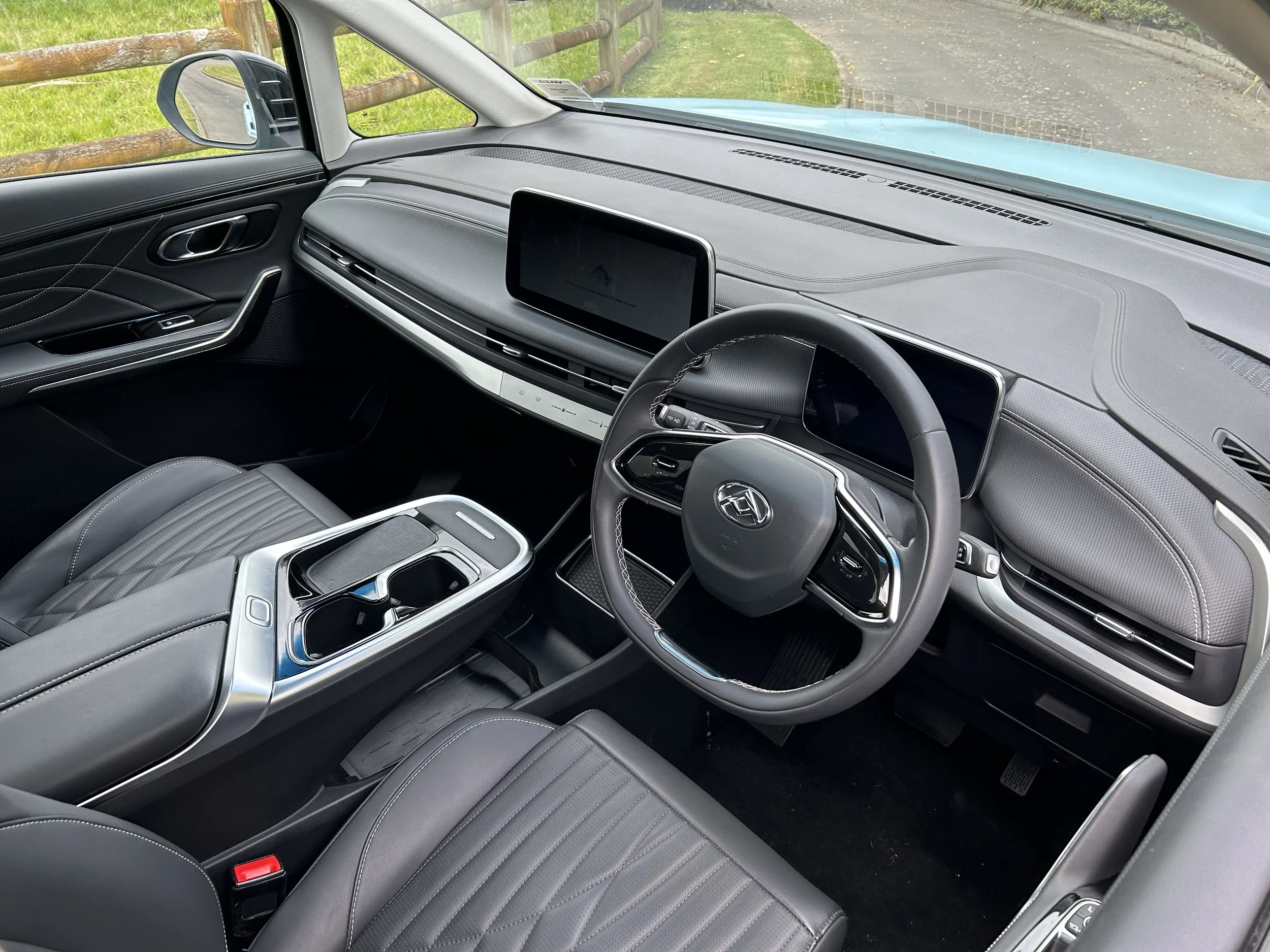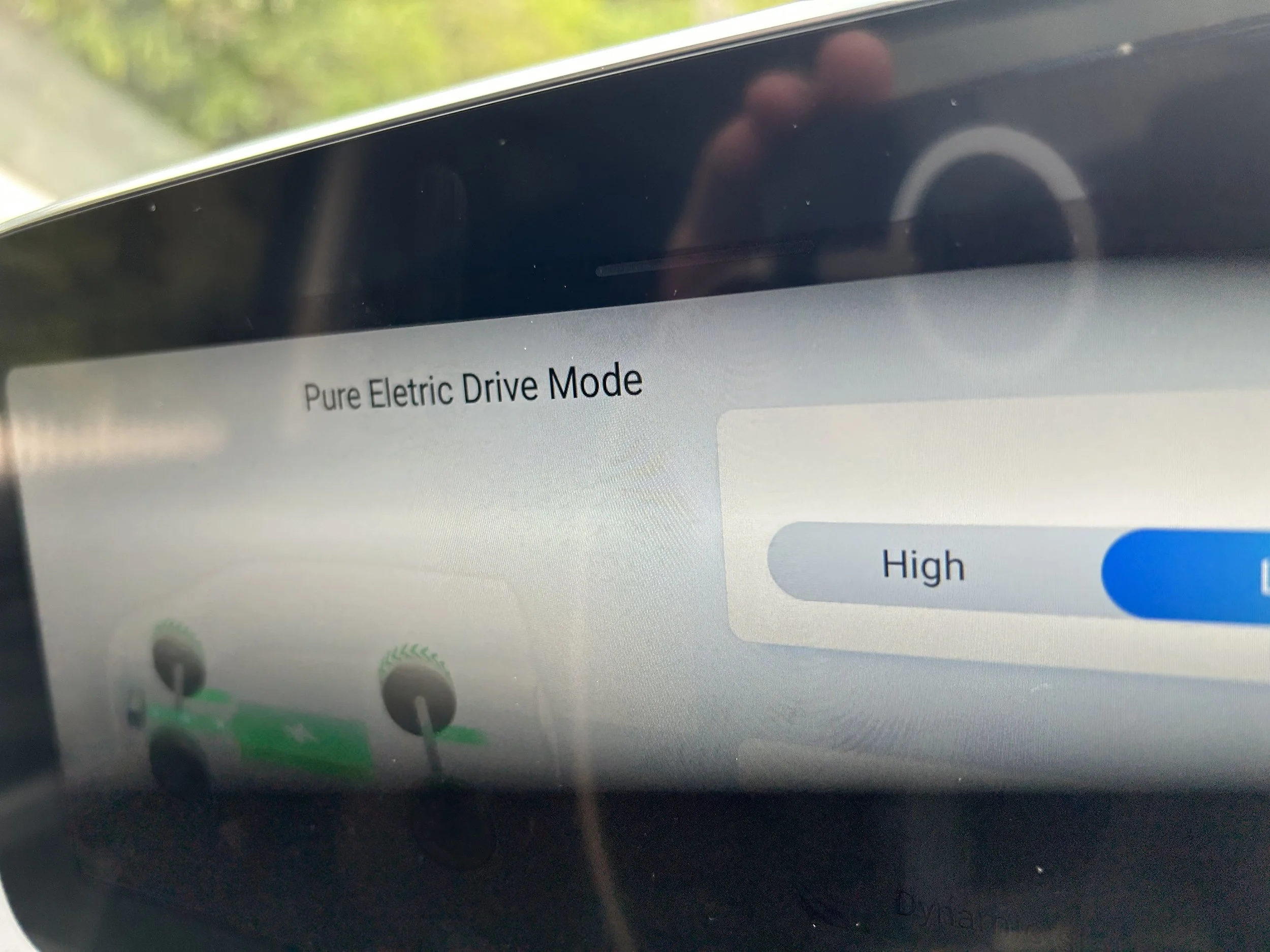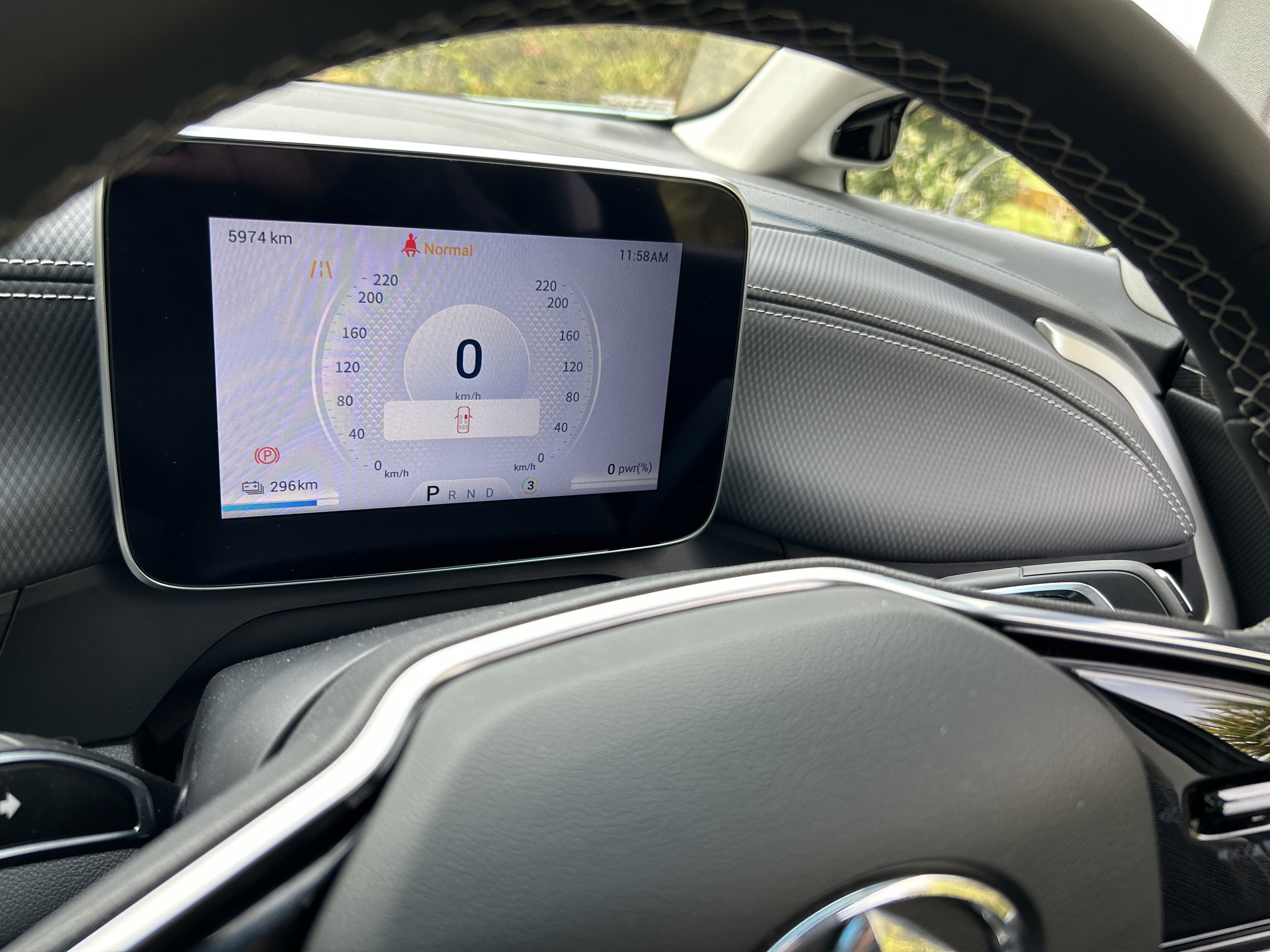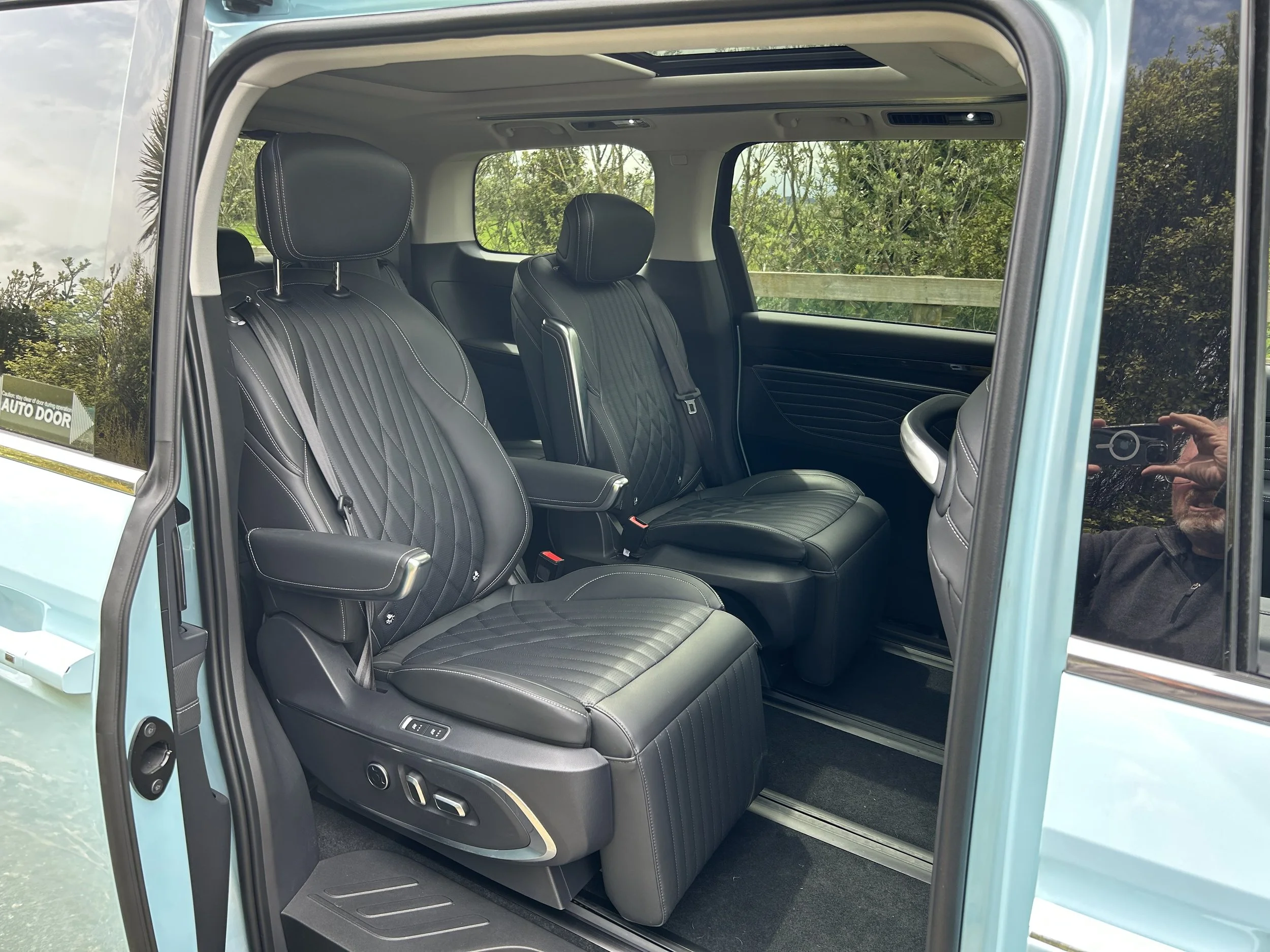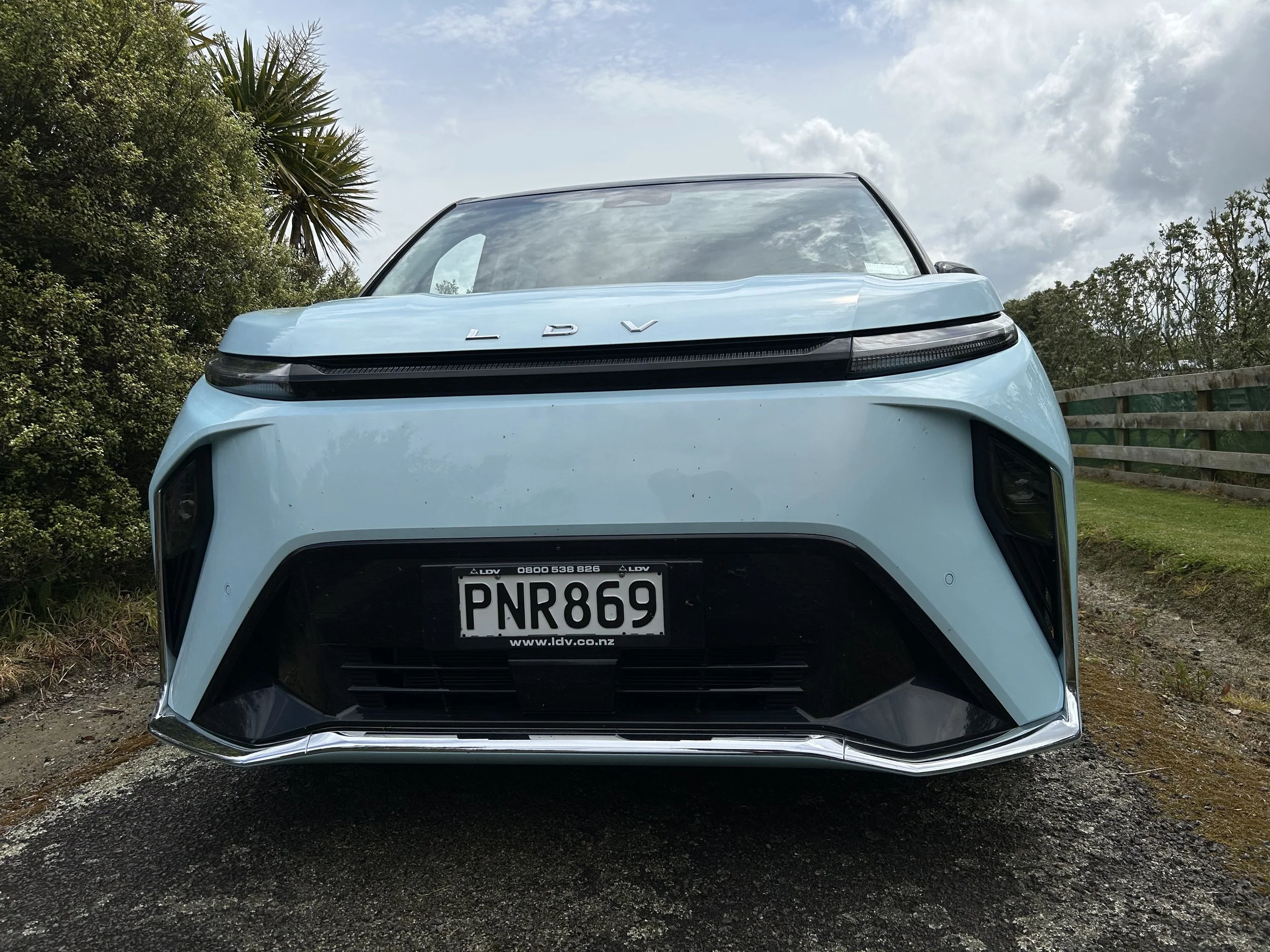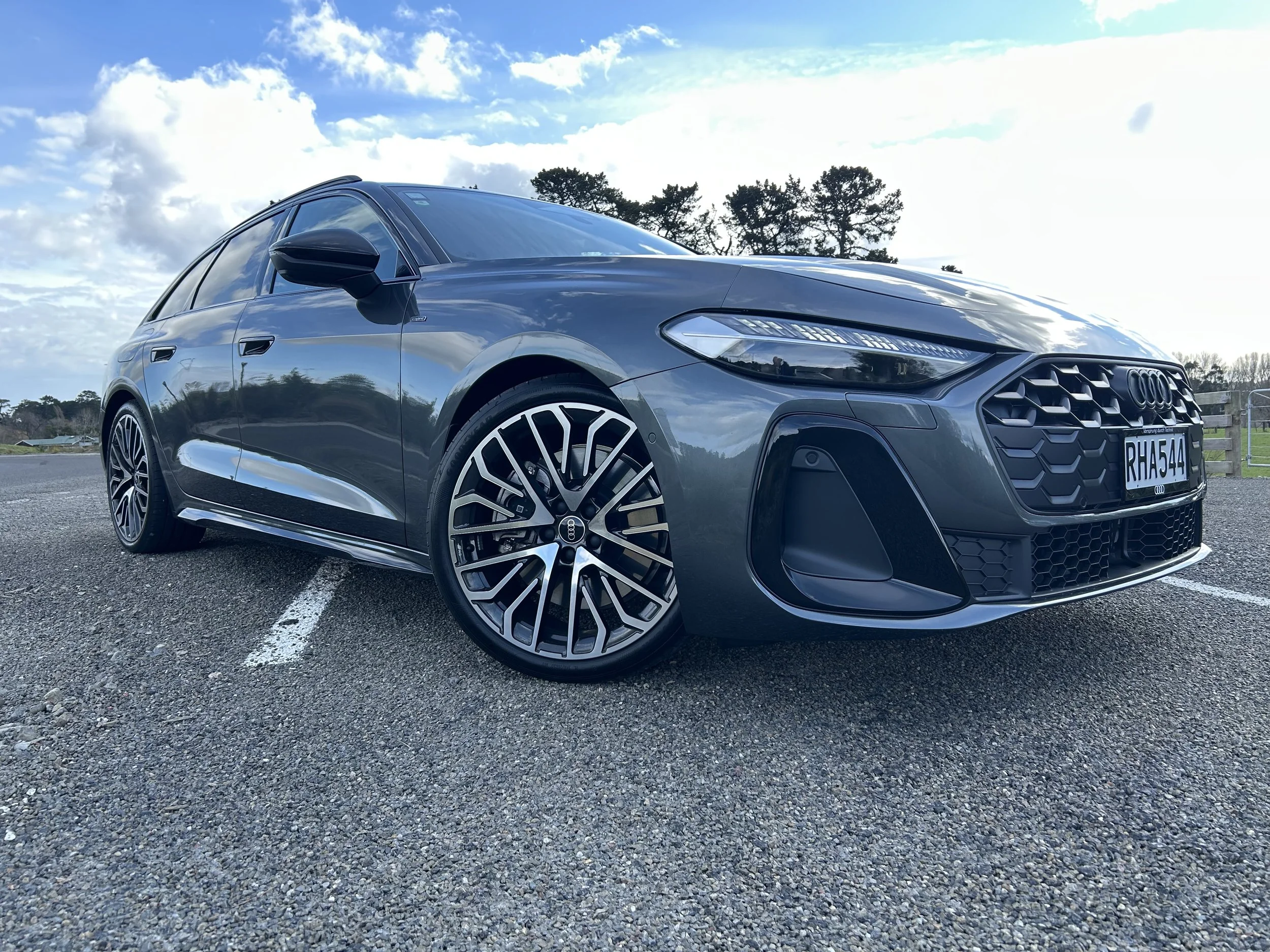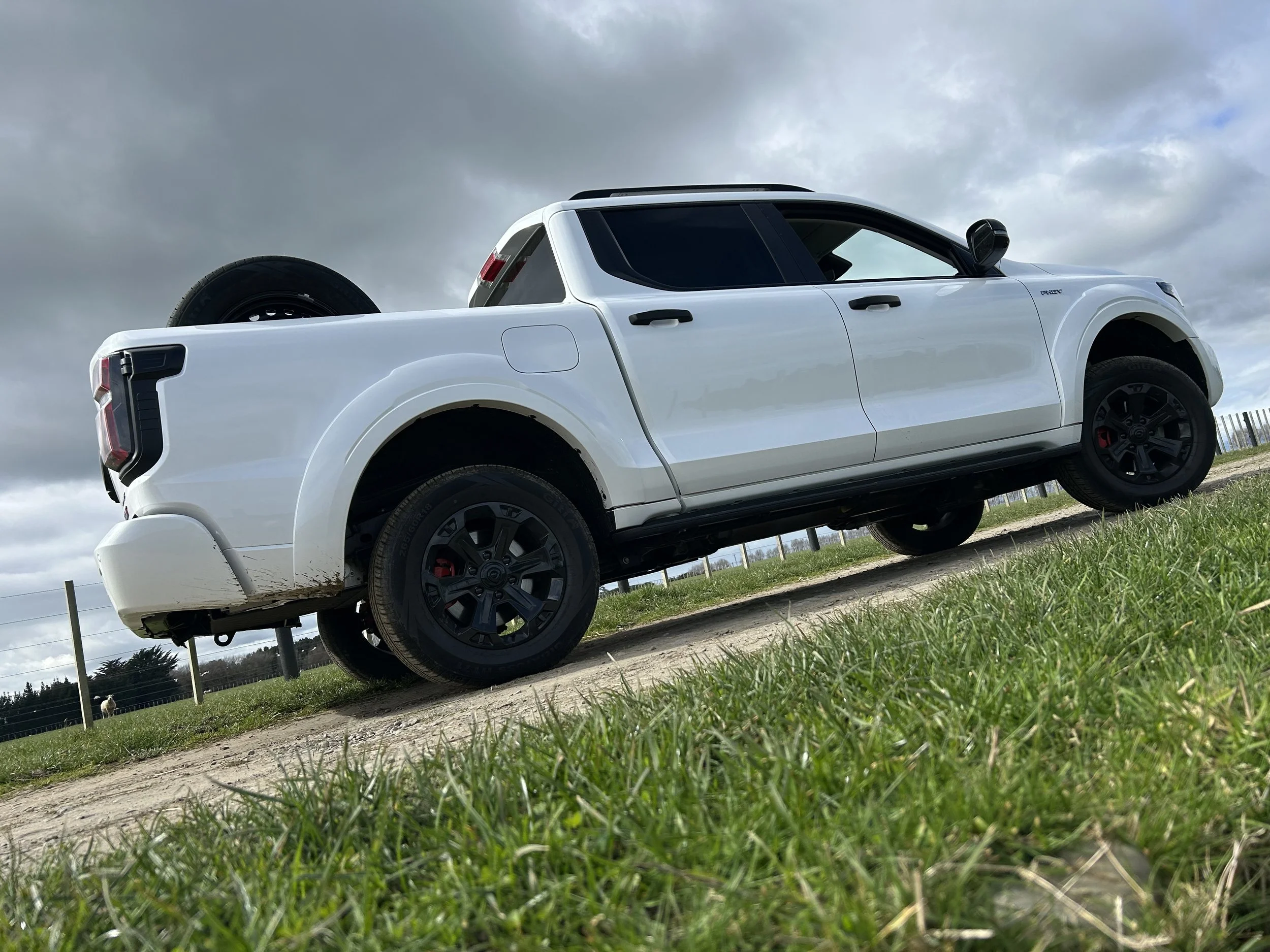LDV Mifa9 Luxury roadtest review: Lost in translation
/A pragmatic seven-seater electric is the car many budget-sensitive families want and China Inc has been hitting home runs, so …
Price: $99,990.
Powertrain and economy: Single electric motor, 180kW/350Nm, 90kWh battery, 435km range WLTP.
Vital statistics: 5270mm long, 1840mm high, 2000mm wide, 3200mm wheelbase, 235/55 19-inch wheels.
We like: Meets the call for a seven-seater electric.
Not so much: On-paper promise simply isn’t met.
EVERY three in 20 cars sold worldwide last year were electric, so the push is on.
One country is charging hard. Electric car development in China is incredible. The electric age has revitalised a domestic car industry that, before batteries were included, had largely focused on cheap and cheerful, often with indifference to global standards for build and safety.
Chinese EVs are often better than that. They have been redefining consumer perceptions and the top brands’ ambitions are now global.
New Zealand has been keen to enjoy all the Red Dragon can offer. Feedback from Kiwi electric vehicle owner forums suggest strong perception of favourable price positioning and good spec, not just comfort features but also in respect to driver assists and safety fare. You’ll hear comment about build quality being world class.
Is it fair to suggest ‘made-in-China’ is now a solid a codex for outright excellence?
The BYD Atto 3 being the current holder of New Zealand Car of the Year, as voted for by the New Zealand Motoring Writers’ Guild (except this judge, BYD refusing to supply), suggests some have achieved high standard. But is it a given all can do this?
Going by this experience with the LDV Mifa9, I’d have to say not.
This is a solid concept deeply wounded by an imprecise approach to design, engineering and presentation.
Quantity versus quality is the scenario here. It is well-provisioned, have an interior layout that speaks to upmarket and there are enough provisions to warrant rich-list interest. Yet the ‘better for less’ pitch isn’t backed up.
So much that goods promising in appearance is undone by unconvincing execution; trims that appearance smart prove so-so in quality. Though it loads with technology, many implementations are slapdash. The screen signalling the drivetrain to be in “pure eletric (sic) drive mode” summed up so much. Vehicle development often takes years before readiness for sign-off and, in this instance, you wonder if there was too much haste to get this car to market.
The impression of it being okay, but not brilliant, also taints how it drives. Perhaps it’ll settle down with a full load, but when driven with just two adults on board, ride quality was brittle and harsh. Hence, perhaps, why the test car was plagued on coarse chip by various cabin squeaks and rattles.
What irked, more, though was the intrusiveness and haphazard nature of the driver assists and alerts.
LDV having delivered it with a comprehensive suite of advanced safety systems is laudable. But functionality-wise some are not particularly well sorted - the lane assist being violently crude in its calibration is the single worst, but a driver attention alert so highly-strung you need only think about changing an audio setting on the centre screen and it’ll be sounding out a telling off comes a close second.
In respect to its over-zealotry, even a Shaolin monk would be tested by the warning chimes and bongs that tie beyond logical functions to action beyond sensible reason; like one in respect to wiper use.
So there are significant challenges. Which is a great pity, because the logic of a vehicle such as this is sound. Ask a Green-minded family how they want their EV served and many will suggest a flexible and sensibly functional seven seater would be the perfect score. That’s the Mifa9.
Moreover, though there are rival propositions, none are in direct competition. Two are Mercedes SUV products - the cheaper but tangibly more compact and cosy EQB - and the EQS, which wihile similarly spacious is also far more extravagant and much more expensive. The other alternate is the Kia EV9, which also sells to bigger spenders than this LDV and isn’t quite the same deal in design terms.
Confidence fuels all Chinese makers and a name created out of the words ‘Maximum, Intelligence, Friendly and Artistic’ - with a numeric that means premium - is certainly a high-octane bombast.
The ideal comes in a boxy front-drive model with seating for seven, the mid-row in captains chairs with even more electric motor-driven adjusts afforded the front set, that weighs in at just over 2.5 tonnes, much of that being accounted for by the 93kWh lithium-ion battery pack (90kWh usable) that feeds a 180kW/350Nm electric motor. Energy use of 21.5kWh/100km and 0-100kmh taking 8.9 seconds with two occupants, presumably with two aboard and in the Sport mode, and range of 430 kilometres all reflect that it’s a big model hauling a decent load even before it accepts anything a family can bung in.
NZ achieves three specification levels, the $99,990 Luxury on test being bookended by a Elite that, at $79,990 at time of writing attracted a $7015 Clean Car rebate, and the $119,900 Premium.
All three types tailor to a comfortable experience because that’s the type’s credo, but specification-wise, the Luxury is closer to the top one than to the entry offer.
Buy Luxury and, as with the Premium, it delivers electric-opening side doors and tailgate and middle seats that in addition to heating, cooling and massaging as the fronts do, have even more electric adjust features, including touch of a button extendible leg rests. All occupants sit under a full-length electric panoramic sunroof.
The Premium model adds in more tech, including a streaming media rearview window – this has both regular reflecting mirror glass and a digital camera image superimposed – and has a 12-speaker sound system (whereas the Luxury stops at eight), plus there are more luxuries.
Yet, realistically, for family use the mid-spec will surely seemed good enough; it still has lots of high-end frills generally only found on more expensive cars, including a 360-view parking camera and a heated steering wheel. In airline terms, it’s not quite full business class, but it’s certainly above premium economy.
The Mifa9 isn’t a full-out van, and looks-wise is literally a world apart - not least with a nose styling that is extremely future-focused - but it is van-equivalent in overall shape and dimension.
It’s long at 5270mm and the 3.2m wheelbase is generous. It is also reasonably wide. You’re very aware of its size when driving. The reverse side of this should mean space aplenty inside and yet it’s a bit of a mixed bag, with third row habitability not quite being as adult-friendly as you might imagine. A big person taking the rearmost row will still feel a bit hemmed in, though being able access the rearmost row without having to tilt the mid-row forwards, as there’s enough room to take the middle pathway between those captains chairs, suggests it is roomier than some.
The last row seats slide fore-aft; put them all the way back and you’ll wonder about the degree of creativity used to cite it as still having 447 litres’ luggage space; it doesn’t look that capacious. Obviously, with those seats folded, it does open up considerably. There’s 1702 litres with the back seats down and 2017L with the front chairs availed.
Normally the focus would start at the front, but in this instance it’s the mid-row zone that deserves priority, because it’s probably the best place to be.
Occupants will delight in their seat having its own digital touchscreen control panel, from which they can not only configure the endless amounts of adjustment but alter the stereo and the cabin’s 64-colour ambient lighting. The chairs come with fold-out tables to work from - though they aren’t fully rigid, they’re strong enough to hold a small laptop - or to eat from.
The driving position is tall; it’s not quite commercial van, but not quite car-like, either; I’m tall and long in leg and arm - it didn’t quite work for me. Visibility from the driver’s seat is reasonable, though, and the seat comfort is decent, though heftier side bolsters wouldn’t go amiss.
First thought from looking around the cabin is that LDV’s designers are button-adverse. The overall dashboard is very minimalist; a lot of its operability is via the 12.3-inch infotainment display which curiously, though very smart-looking, lacks satellite navigation. If you want that, you need run the wireless connect mapping on your phone - it’s Apple and Android ready.
The screen provides a deep dive into all manner of the operability; some elements that you will need to use daily, some that barely need consideration. Few are easily accessed because while the native software package promises much, it is annoyingly uneven in its ability to deliver. The infotainment side asks for patience and more lateral thinking that seems logical; even sorting out favourite stations is more of a faff than it needs to be.
I learned that making phone calls was a waste of time; the in-cabin microphone seems to be poor, as while I could easily hear those I was calling, or being called by, they often struggled to hear me, all uniformly describing the quality as being scratchy and distant.
The wide array of driver assist systems are advanced only in their technical proposition. Integration of the forward and reverse autonomous emergency braking, lane-keeping assist with lane-departure warning, speed sign recognition, adaptive cruise control, driver attention monitoring, blind-spot monitoring, and rear cross-traffic alert, front and rear park sensors and a 360-degree view camera system is generally poor.
The lane-keeping assist’s intervention sensitivity is off to the point that it will for a short period still try to stymie lane changes even after these are being indicated. If you should stray toward a centre line the reactiveness is the most brutal I’ve ever encountered. The active cruise control that ties functions competently but an activation process that requires double tapping the shift lever on the right of the steering column is illogical; the potential for false outcomes when engaging and releasing are high. And all the time there are warning chimes. It does your head in.
More than this requires recalibration. Given that it is not overly imbued with power, it was surprising how easy it was to trigger wheelspin. It’s the instantaneous nature of the electric motor; most EVs have better traction controls. You’ll need to watch it on wet surfaces; a colleague has related how he found it hard to accelerate up a slight incline in the wet smoothly. Better calibration of the vehicle's electric drive system seems warranted. Giving it better tyres than the EcoContact rubber it gets might not be a bad idea, either. These boots are quick to squeal disapproval.
Although the LDV Mifa 9 offers as an interesting-looking car with plenty of surface-level technology, it is an unpolished effort, with shortcomings that cannot be ignored and require remedy. Unless that happens, any potential is stymied.
LDV has its roots in commercial vehicles and perhaps that it where its real strengths lay.

